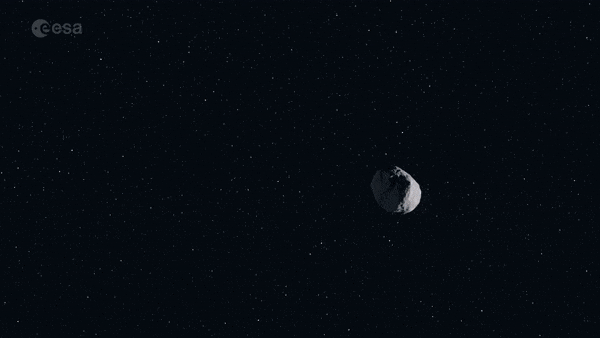
Copernical Team
Exploring deep space: How can we get there safely and sustainably?

Once the sole dominion of sci-fi movies and novels, the subject of deep space exploration and interplanetary colonization has moved several steps closer to becoming a reality thanks to major advances in aerospace engineering, medicine, and physics.
Sending astronauts to the International Space Station for extended missions has provided a wealth of information about keeping humans alive in the challenging environment of space. Back on earth, scientists and engineers attempt to replicate off-world conditions to test limits for more ambitious missions.
Why "nuclear batteries" offer a new approach to carbon-free energy
 We may be on the brink of a new paradigm for nuclear power, a group of nuclear specialists suggested recently in The Bridge, the journal of the National Academy of Engineering. Much as large, expensive, and centralized computers gave way to the widely distributed PCs of today, a new generation of relatively tiny and inexpensive factory-built reactors, designed for autonomous plug-and-play operat
We may be on the brink of a new paradigm for nuclear power, a group of nuclear specialists suggested recently in The Bridge, the journal of the National Academy of Engineering. Much as large, expensive, and centralized computers gave way to the widely distributed PCs of today, a new generation of relatively tiny and inexpensive factory-built reactors, designed for autonomous plug-and-play operat Setting gold and platinum standards where few have gone before
 Like two superheroes finally joining forces, Sandia National Laboratories' Z machine - generator of the world's most powerful electrical pulses - and Lawrence Livermore National Laboratory's National Ignition Facility - the planet's most energetic laser source - in a series of 10 experiments have detailed the responses of gold and platinum at pressures so extreme that their atomic structures mom
Like two superheroes finally joining forces, Sandia National Laboratories' Z machine - generator of the world's most powerful electrical pulses - and Lawrence Livermore National Laboratory's National Ignition Facility - the planet's most energetic laser source - in a series of 10 experiments have detailed the responses of gold and platinum at pressures so extreme that their atomic structures mom Detergent maker helps NASA explore space laundry
 A detergent maker and NASA are teaming up to research how astronauts could do laundry in space, especially on Deep Space missions, using minimal energy and water.
Procter & Gamble has signed a pact with NASA, known as a Space Act Agreement. Under the pact, NASA seeks laundry solutions in space, while the detergent, Tide, gains publicity and furthers product development. Both parties
A detergent maker and NASA are teaming up to research how astronauts could do laundry in space, especially on Deep Space missions, using minimal energy and water.
Procter & Gamble has signed a pact with NASA, known as a Space Act Agreement. Under the pact, NASA seeks laundry solutions in space, while the detergent, Tide, gains publicity and furthers product development. Both parties Throwing an 'axion bomb' into a black hole challenges fundamental law of physics
 Singularities such as those at the centre of black holes, where density becomes infinite, are often said to be places where physics 'breaks down'. However, this doesn't mean that 'anything' could happen, and physicists are interested in which laws could break down, and how.
Now, a research team from Imperial College London and the Cockcroft Institute and Lancaster University have proposed
Singularities such as those at the centre of black holes, where density becomes infinite, are often said to be places where physics 'breaks down'. However, this doesn't mean that 'anything' could happen, and physicists are interested in which laws could break down, and how.
Now, a research team from Imperial College London and the Cockcroft Institute and Lancaster University have proposed A new chapter for space sustainability
 Each day, new and innovative space technologies are being developed in countries around the world, and with that, a steady stream of satellites, rockets, cargo ships, and crew vehicles are being launched into the Earth's orbit and beyond. So what happens to these systems when they come to the end of their functional life, or malfunction and break?
Some are programmed to re-enter the Earth'
Each day, new and innovative space technologies are being developed in countries around the world, and with that, a steady stream of satellites, rockets, cargo ships, and crew vehicles are being launched into the Earth's orbit and beyond. So what happens to these systems when they come to the end of their functional life, or malfunction and break?
Some are programmed to re-enter the Earth' China's relay satellites facilitate clear, smooth space-ground communication
 A space-based measurement and control system composed of multiple relay satellites has guaranteed clear and smooth communication between ground control and Chinese astronauts in space.
The relay satellites Tianlian I-03, Tianlian I-04 and Tianlian II-01 have been providing stable measurement and data relay support for the complex consisting of Tianhe core module, the cargo craft Tianzhou-2
A space-based measurement and control system composed of multiple relay satellites has guaranteed clear and smooth communication between ground control and Chinese astronauts in space.
The relay satellites Tianlian I-03, Tianlian I-04 and Tianlian II-01 have been providing stable measurement and data relay support for the complex consisting of Tianhe core module, the cargo craft Tianzhou-2 War in Space is Coming
 A new arms race is unfolding among spacefaring nations. Space experts have been telling us about contested space for the last several years. The number of active satellites is exploding from about 1,000 a few years ago to an expected 50,000+ within 10 years. The sky is indeed getting very congested.
These satellites provide worldwide communications, GPS navigation, weather forecasting and
A new arms race is unfolding among spacefaring nations. Space experts have been telling us about contested space for the last several years. The number of active satellites is exploding from about 1,000 a few years ago to an expected 50,000+ within 10 years. The sky is indeed getting very congested.
These satellites provide worldwide communications, GPS navigation, weather forecasting and China is using mythology and sci-fi to sell its space program to the world
 On the morning of June 17, China launched its long-awaited Shenzhou-12 spacecraft, carrying three Chinese astronauts - or taikonauts - towards the Tianhe core module. The module itself was launched at the end of April, forming part of the permanent Tiangong space station, which is planned to remain in orbit for the next ten years.
China's construction of its own space station stems from th
On the morning of June 17, China launched its long-awaited Shenzhou-12 spacecraft, carrying three Chinese astronauts - or taikonauts - towards the Tianhe core module. The module itself was launched at the end of April, forming part of the permanent Tiangong space station, which is planned to remain in orbit for the next ten years.
China's construction of its own space station stems from th ESA joins Asteroid Day for rocky live broadcast

What do astronauts, rockstars, scientists and communicators have in common? You’ll find some of the best at this year’s 5-hour live Asteroid Day broadcast, bringing to life the smallest known worlds in the Solar System – with the potential to make a huge impact here on Earth.
